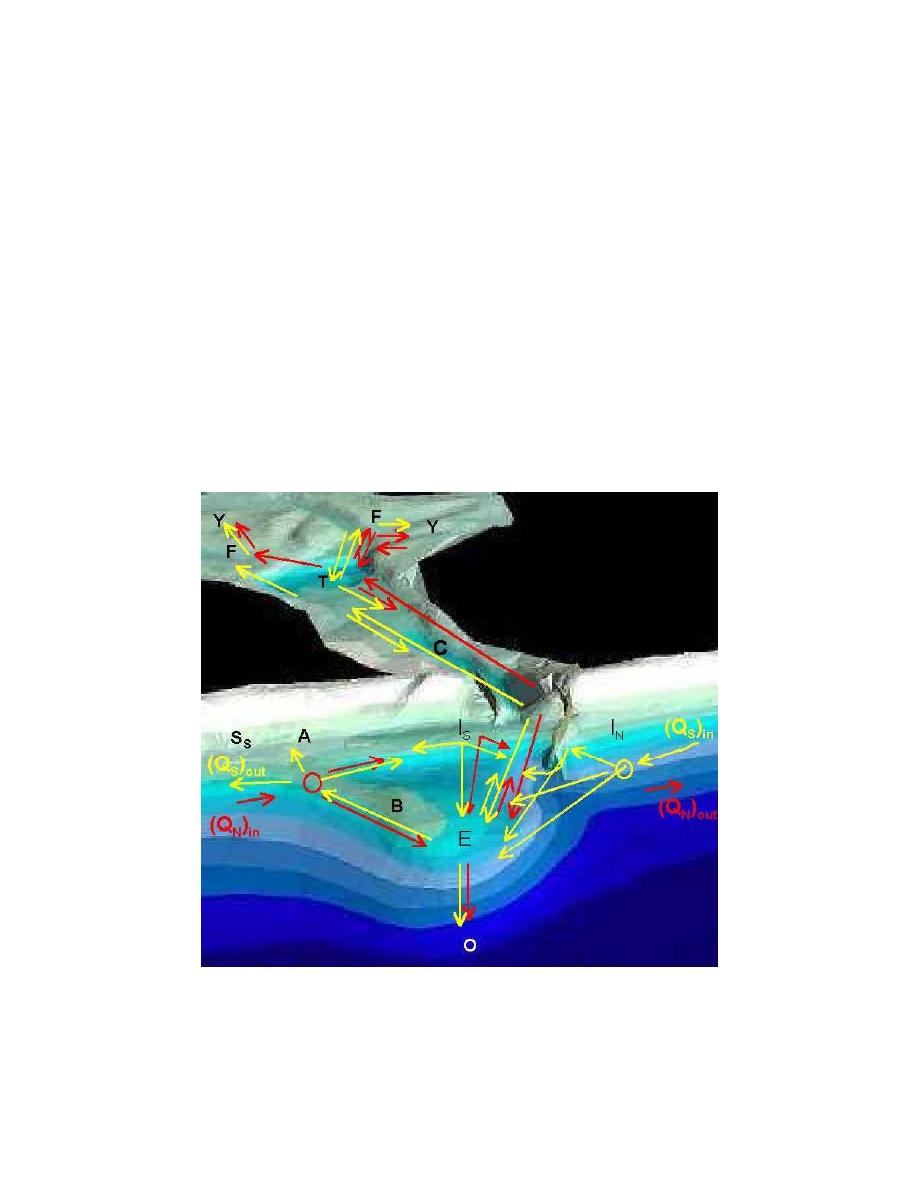
Analysis of morphologic change and wave climate at Sebastian Inlet indicated the need to
enhance the Reservoir Model to accommodate more complex sediment pathways. The seasonally
variable wave climate and topographic configuration of the ebb shoal at Sebastian Inlet require an
application of the model that includes sediment movement across the outer inlet in both north and
south direction, as well as the ability to carefully partition sediment transport through the inlet
conveyance channel. Furthermore, the model must be able to handle episodic removal of material
from the sand trap.
Figure 9 schematically shows the various transport paths included in the enhanced Reservoir
Model. Principal refinements in the Reservoir Model established for the Sebastian Inlet case were
(1) the capability to "back pass" sediment to the updrift side of the inlet based on seasonal or
episodic reversals in wave direction, (2) different sediment pathways according to direction of
longshore transport, and (3) representation of dredging of material from the deposition basin and the
channel. The deposition basin or sand trap between the flood shoal and main inlet channel was
added to the list of inlet features, and the material dredged according to records was removed in the
model. Model terms were also added to represent the nature of the back bay system to be a large
sink for sand, and to define the rate of sediment loss to the distal reaches of the flood shoal system.
Fig. 9. Sediment pathways described in the Reservoir Model superimposed
on Sebastian Inlet morphologic components (E=ebb shoal, B-bypass bar,
A=attachment bar, C=channel, T=sand trap, F=flood shoal, Ss=south fillet,
In= north fillet.
11
Zarillo et al.




 Previous Page
Previous Page
